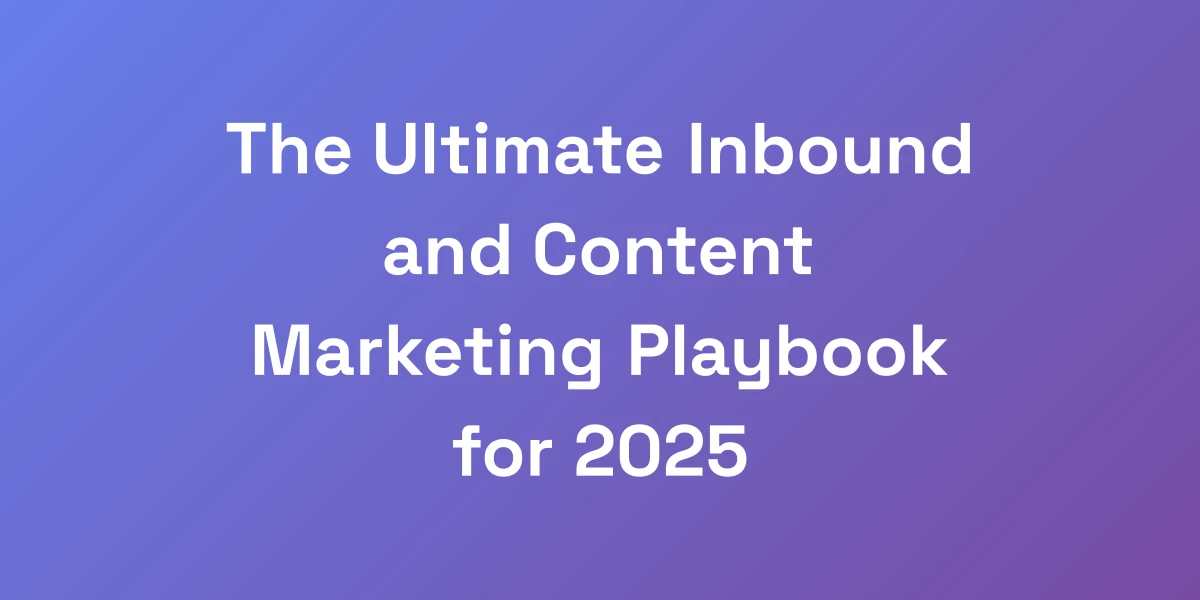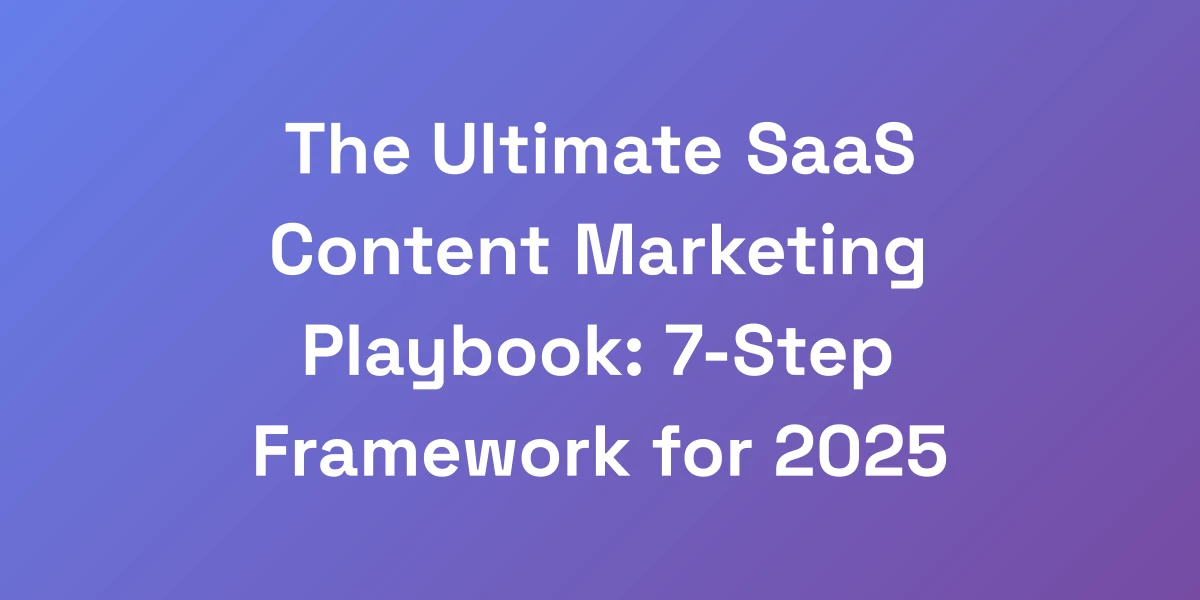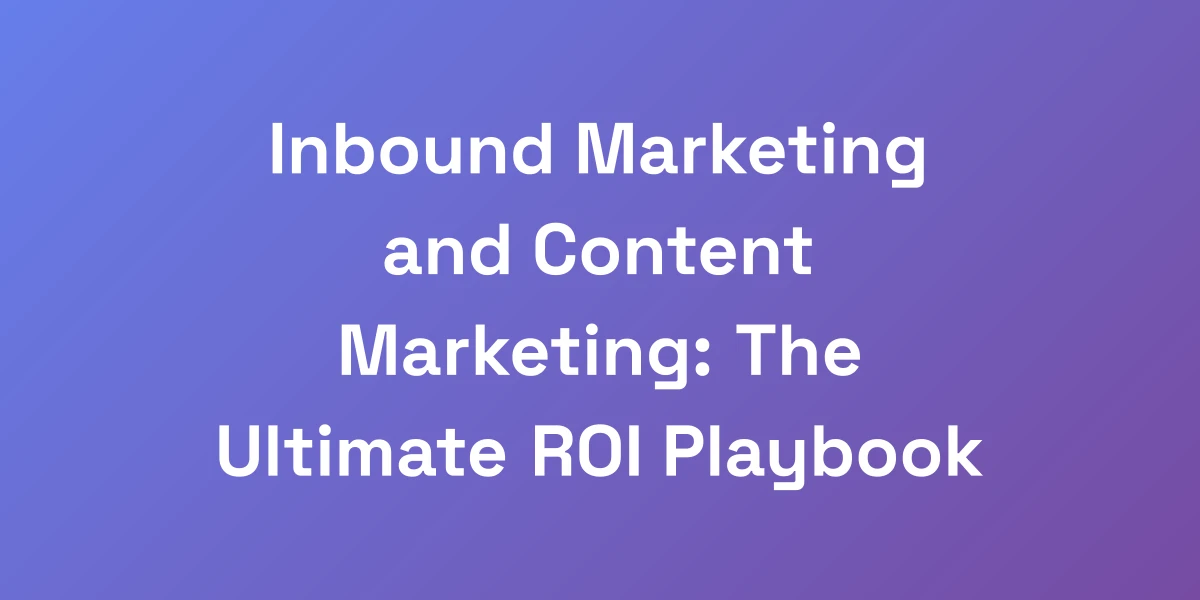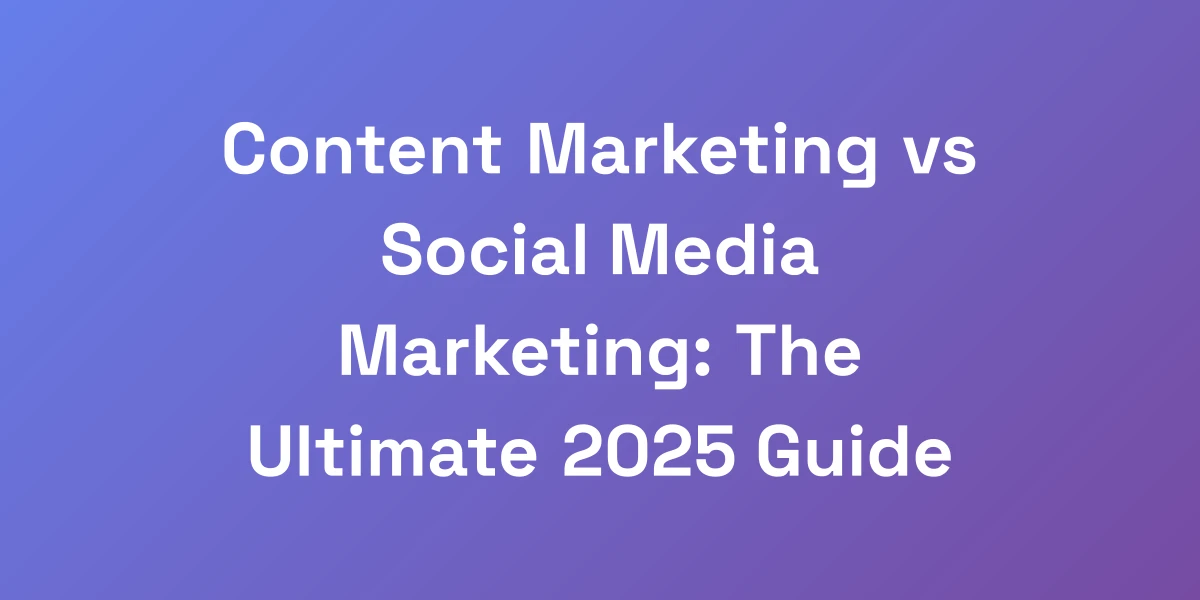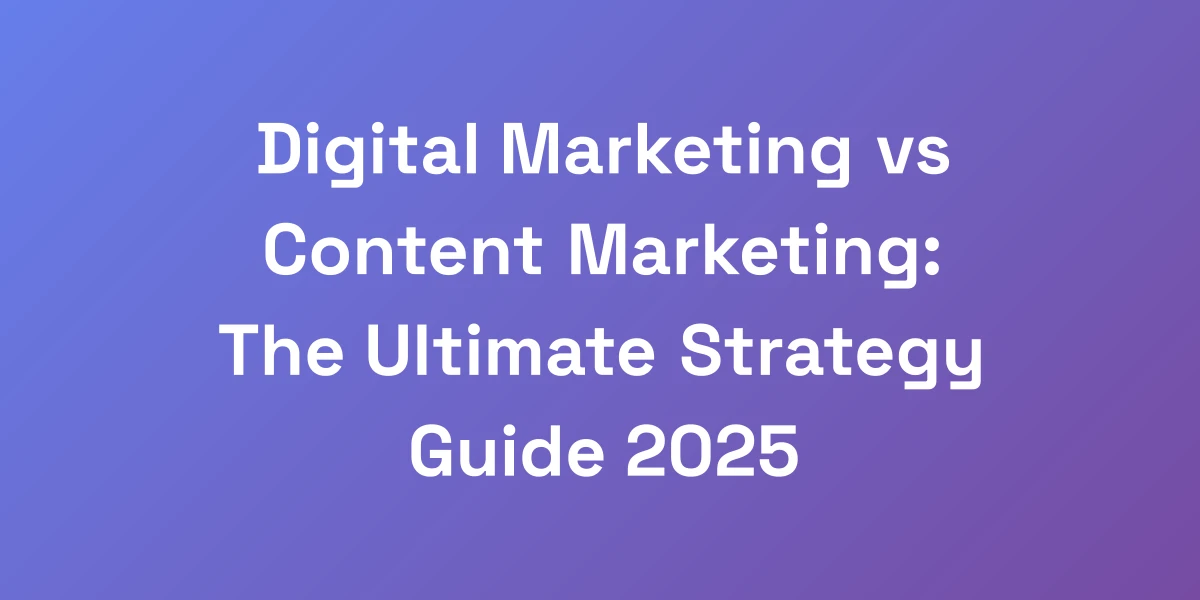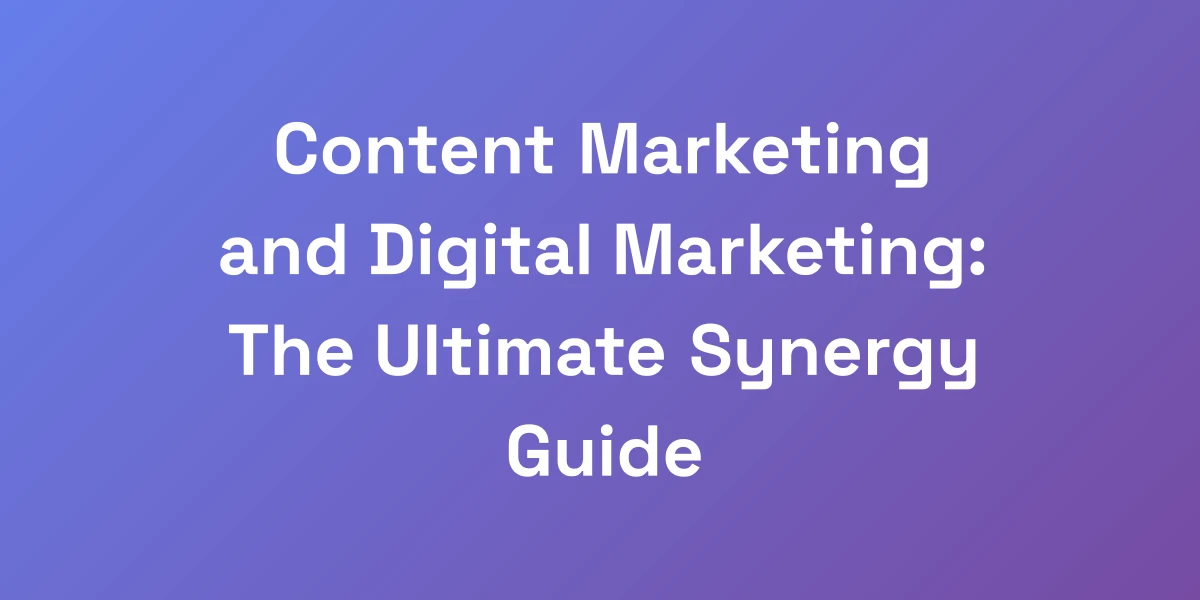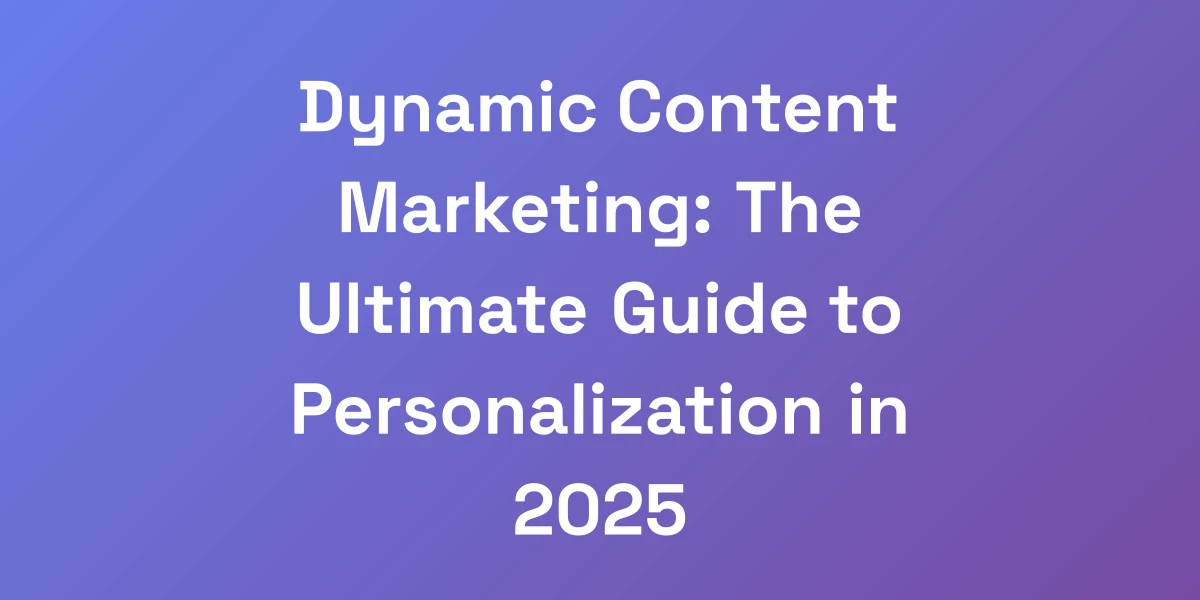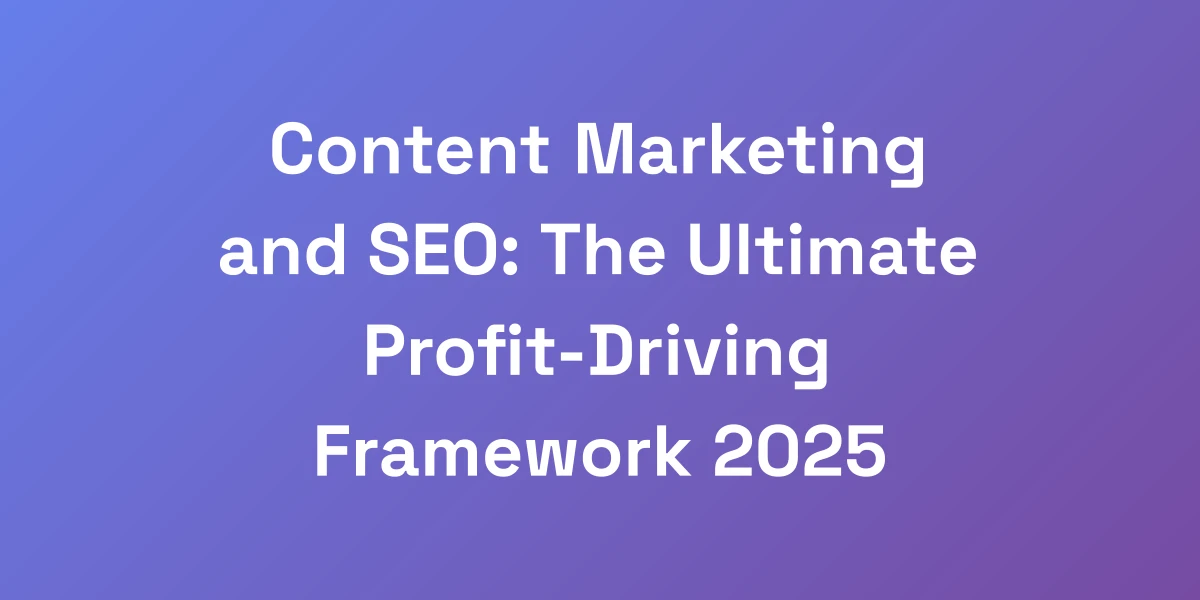
Content Marketing and SEO: The Ultimate Profit-Driving Framework 2025
Mar 1, 2025 | By [email protected]
Introduction
We’re standing at the crossroads of content marketing and SEO, two powerhouses that, when combined, can skyrocket your business to unprecedented heights.
But here’s the kicker: most businesses are failing to harness this synergy effectively.
Imagine treating content marketing and SEO as separate entities. It’s like owning a high-performance sports car but never firing the engine.
The reality is, without a strategic integration, you’re leaving a ton of money on the table.
We’ve seen it time and again—companies generating millions in revenue but missing out on massive traffic simply because they didn’t get this one crucial thing.
In this article, we’re diving deep into why most businesses fail at combining content marketing and SEO and unveiling the ultimate framework that drives profits seamlessly.
Ready to transform your strategy and dominate 2025? Let’s get started.
Why Most Businesses Fail at Combining Content Marketing and SEO (The Hard Truth)
Let us be crystal clear: 90% of businesses are leaving money on the table by treating content marketing and SEO as separate entities.
We’ve consulted for companies doing millions in revenue who were essentially throwing away traffic because they didn’t understand this one crucial thing.
Content marketing without SEO is like opening a store in the desert, and SEO without strategic content is like having a Ferrari with no engine.
The truth? When you properly integrate these two powerhouses, you create an unstoppable traffic and conversion machine.
The Costly Misconceptions About Content Marketing and SEO
One common misconception is that content marketing is solely about creating engaging content, while SEO is just about optimizing for search engines.
But let’s face it, these two are intertwined. Thinking they operate in silos not only limits their effectiveness but also inflates costs unnecessarily.
Here are some misconceptions we frequently encounter:
- Content marketing is free marketing: Many believe that merely creating content will drive traffic. But without SEO, it’s content shouting into the void.
- SEO is a one-time task: SEO requires ongoing optimization, much like content needs regular updates to stay relevant.
- More content equals better SEO: It’s not about quantity; it’s about quality and strategic keyword placement.
These misconceptions lead to fragmented strategies that fail to capitalize on the full potential of integrated marketing efforts.
Real Numbers: The Revenue Impact of Integrated vs. Separated Approaches
Let’s talk numbers. Businesses that integrate content marketing with SEO see significantly higher revenue impacts compared to those that keep them apart.
For instance, companies using both strategies effectively generate three times the leads at 62% less cost than outbound marketing.
Additionally, integrating AI SEO tools with content marketing and SEO can boost ROI by up to 70%.
On the flip side, those treating them separately miss out on these substantial gains, resulting in lower traffic and missed revenue opportunities.
Furthermore, moving from position 2 to position 1 in search results can increase organic traffic by 50%—a testament to the power of integrated strategies.
Why Traditional Content Marketing Advice is Killing Your Growth
Traditional content marketing advice often falls short because it doesn’t account for the dynamic nature of SEO.
“Create good content and sprinkle some keywords” used to work, but not anymore.
With Google’s latest algorithm updates focusing on user intent and content quality, outdated strategies can actually harm your growth.
Sticking to old practices means missing out on opportunities to leverage advanced technologies like AI and NLP, which are now essential for maintaining a competitive edge.
We’ve seen businesses struggle and stagnate simply because they refused to evolve their content strategies alongside SEO advancements.
The Three Deadly Sins of SEO-Content Integration
Failing to integrate SEO and content marketing can be disastrous. Here are the three deadly sins to avoid:
- Neglecting Keyword Research: Without thorough keyword research, your content won’t align with what your audience is searching for.
- Poor Content Structure: Disorganized content confuses both users and search engines, reducing engagement and rankings.
- Lack of Continuous Optimization: SEO isn’t a set-it-and-forget-it deal. Continuous optimization is crucial for sustained success.
By avoiding these pitfalls, you can ensure that your SEO and content marketing efforts work in harmony, driving sustained growth and revenue.
The New Paradigm: Revenue-Focused Content Optimization
It’s time to shift our focus from just creating content to optimizing it for revenue.
Revenue-focused content optimization means every piece of content you produce is designed with both the algorithm and the buyer’s journey in mind.
This approach ensures that your content attracts the right traffic and converts it into paying customers.
Think of it as building a funnel where every stage—from awareness to decision—is meticulously crafted to maximize conversions and drive profits.
By adopting this new paradigm, you’re not just generating traffic; you’re creating a revenue stream that keeps growing year after year.
The Million-Dollar Content-SEO Framework That Actually Works
After working with over 100 businesses and generating millions in revenue through organic traffic, we’ve developed a framework that consistently delivers results.
This isn’t your typical “write good content and sprinkle keywords” advice. This is a systematic approach that transforms your content into a revenue-generating asset.
The key? Understanding that every piece of content needs to serve both the algorithm and the buyer’s journey.
Here’s the exact framework we use with our 7-figure clients.
The Content Profit Multiplier Method™
This method revolves around multiplying the profit potential of each piece of content.
Instead of creating content once and letting it gather dust, we repurpose and optimize it across multiple channels.
For example, a single blog post can be transformed into a webinar, a series of social media posts, an eBook, and more.
This not only maximizes the content’s reach but also ensures that it continues to drive traffic and conversions over time.
By doing this, we amplify the return on investment for each piece of content, making your strategy more efficient and profitable.
Strategic Keyword Clustering for Maximum ROI
Keyword clustering is about grouping related keywords to cover a broader topic comprehensively.
Instead of targeting individual keywords, we create clusters that address a range of related terms and queries.
This approach ensures that your content ranks for multiple related keywords, increasing visibility and drawing in a larger audience.
For instance, if you’re targeting “content marketing,” you might cluster related keywords like “content strategy,” “content creation,” and “content distribution.”
This not only boosts your SEO but also provides a more holistic approach to addressing your audience’s needs.
Content Architecture That Google Loves
Having a well-structured content architecture is crucial for both user experience and SEO.
We design your website’s content structure to ensure that it’s easy for Google to crawl and index your pages, while also making it intuitive for users to navigate.
Here are some key elements:
- Clear Hierarchy: Organize your content into a logical hierarchy, with main topics and subtopics clearly defined.
- Internal Linking: Use internal links strategically to guide users through related content and distribute page authority.
- URL Structure: Ensure your URLs are clean, descriptive, and include relevant keywords.
A robust content architecture not only improves your SEO but also enhances user engagement, leading to higher conversion rates.
The 80/20 of Technical SEO That Matters
Technical SEO can be overwhelming, but focusing on the 80/20 is key.
This means identifying the 20% of technical SEO elements that will yield 80% of the results.
Here are the top areas to focus on:
- Site Speed: Fast-loading sites improve user experience and are favored by Google.
- Mobile Optimization: Ensure your site is fully responsive and mobile-friendly.
- Secure HTTPS: Security is a ranking factor, so make sure your site uses HTTPS.
- Clean Code: Remove unnecessary code and ensure your site’s backend is optimized for search engines.
By concentrating on these key areas, you can significantly enhance your site’s performance and SEO rankings without getting bogged down by every technical detail.
Converting Traffic into Actual Dollars
Driving traffic is only half the battle. The
